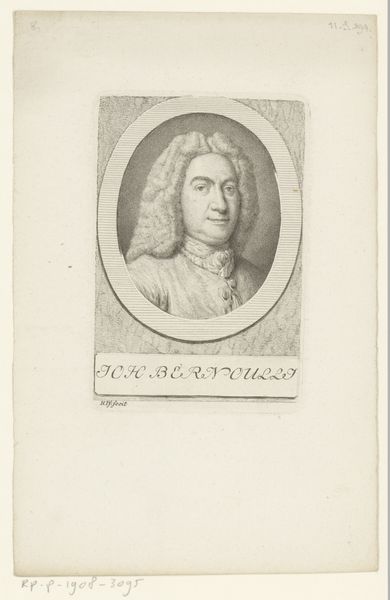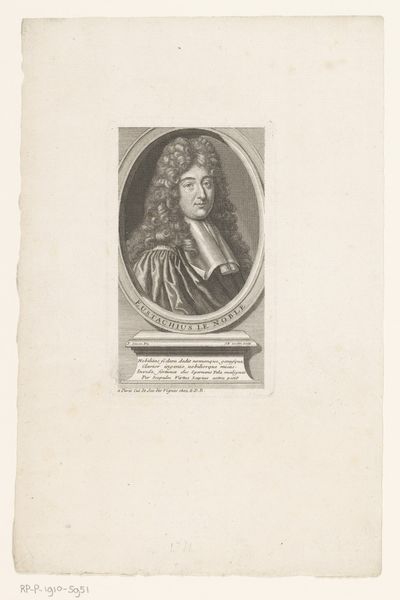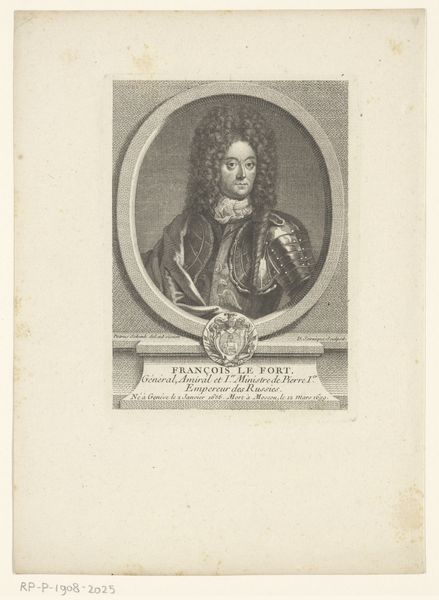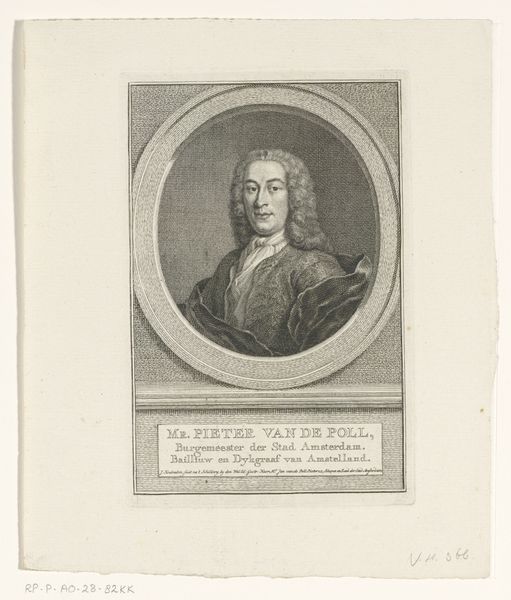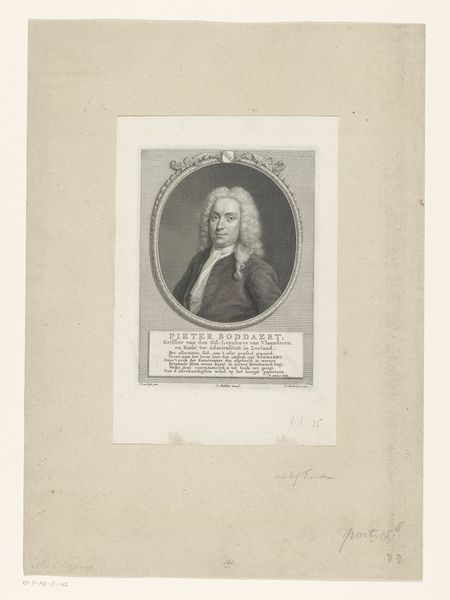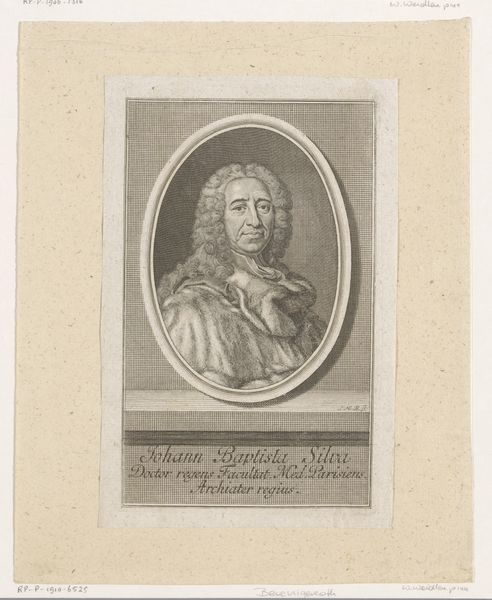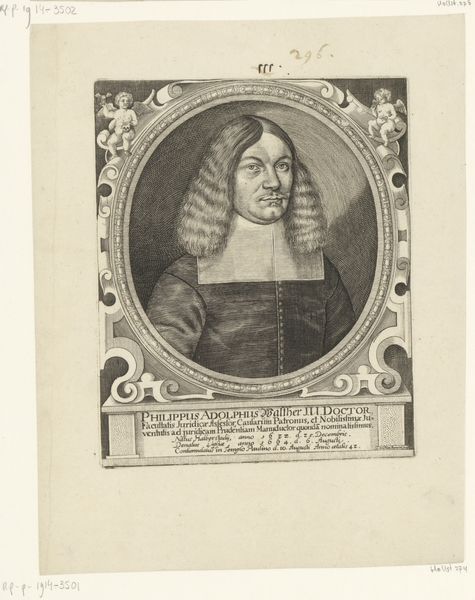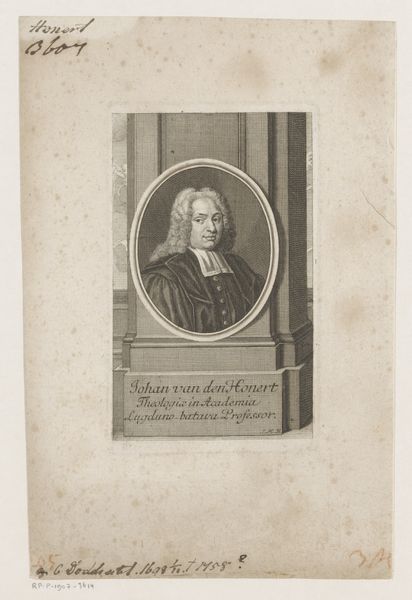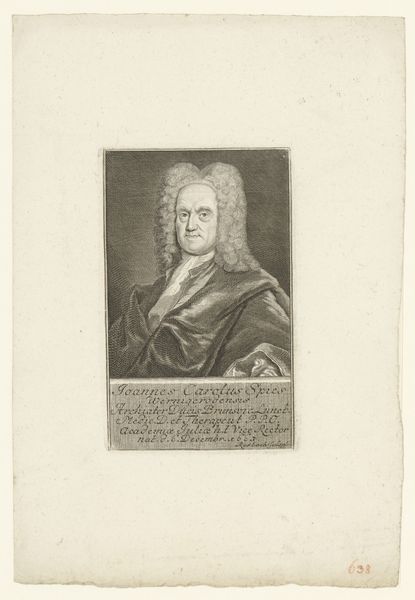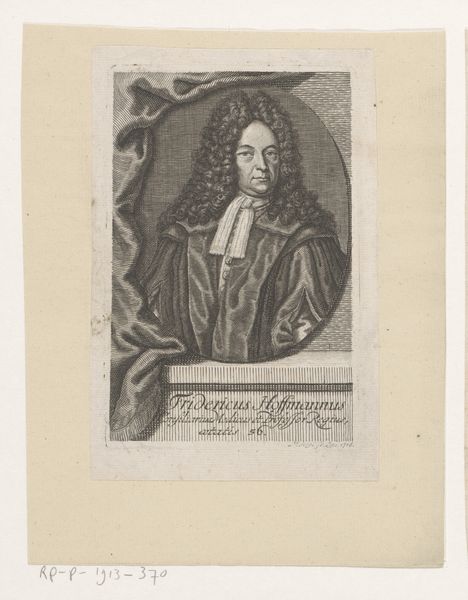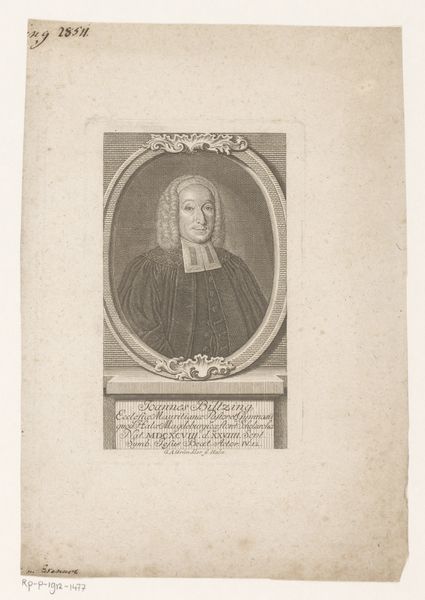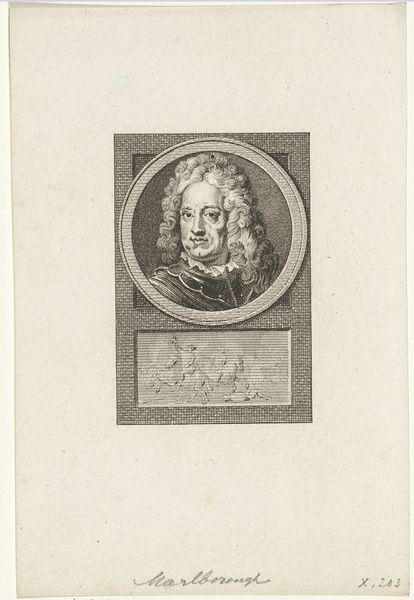
Dimensions: height 124 mm, width 82 mm
Copyright: Rijks Museum: Open Domain
Editor: We’re looking at "Portret van Johann Bernoulli (I)", a print by Heinrich Pfenninger made sometime between 1759 and 1815. The fine lines create an almost ethereal quality. What immediately jumps out at you? Curator: The piece invites us to examine its formal arrangement. Consider how the oval frame, containing the subject's likeness, interacts with the rectangular structure supporting the inscription. The tension created by these opposing shapes is compelling. And what of the tonal gradations achieved solely through the density of etched lines? How do they sculpt the face and suggest volume? Editor: I see what you mean about the frame! The stark contrast highlights his face. Does the medium itself - the engraving - play a significant role here? Curator: Indubitably. Engraving, with its precise lines and capacity for detailed reproduction, lends a sense of order and intellectual rigor appropriate for portraying a figure of scholarly importance. Observe how Pfenninger manipulates line weight to differentiate textures - the smooth skin versus the elaborate wig, for example. Do you perceive any areas where the line work seems particularly masterful? Editor: I'm drawn to the way the light catches the hair; the engraver’s skill is really evident there. Curator: Precisely. The interplay of light and shadow, achieved solely through variations in line, demonstrates a sophisticated understanding of form. Consider, too, the philosophical implications of creating a likeness through such a meticulous, controlled process. It’s a deliberate act of translating a human presence into a codified visual language. Editor: It’s fascinating how much meaning is embedded just in the technique. Thank you! Curator: A pleasure. Through meticulous observation, we have illuminated the profound connection between artistic form and conceptual depth, confirming the enduring power of close analysis.
Comments
No comments
Be the first to comment and join the conversation on the ultimate creative platform.
